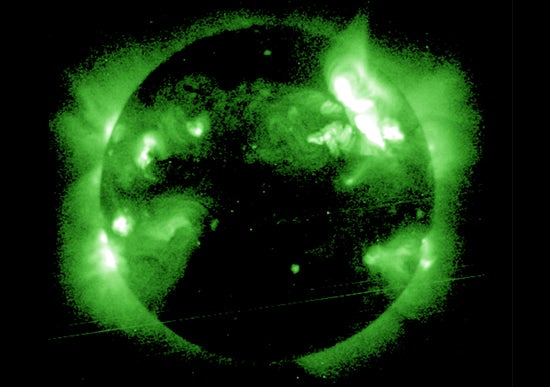Today, Earth is going to feel impacts of a solar storm. Millions of charged particles are heading toward Earth from the sun. This “space weather” has been created by the largest solar storm in the past six years.
Impacts could range from losing communications between satellites and ground stations to causing damage to the electrical grid. One of the U.S. airlines is preemptively re-routing its flights away from the North Pole to avoid impacts of the geomagnetic storm. But this pales in comparison to truly massive space weather or electromagnetic pulse (EMP) weapon events that have the potential to bring modern societies to their knees.
An EMP is a high-intensity burst of electromagnetic energy caused by the rapid acceleration of charged particles. An EMP would disable all electric devices within its line of sight, including electrical grids, computers, cell phones, and means of transportation. A high-altitude nuclear weapons detonation would deliver the most devastating EMP effect. An EMP, however, can be cause by radiological weapons detonations as well.
Society is more dependent on electronic devices than at any point in the history. A massive solar weather or an EMP attack would make all electronic devices stop working and instantly send civilization back to the 18th century.
Fortunately, the United States can take steps to protect its vital infrastructure. The public and private sectors should harden vital infrastructure to make it more resilient and resistant to solar storm or EMP effects. In addition to hardening its electrical grid, the U.S. should also develop a national plan to respond to EMP emergencies. This would involve educating federal, state, and local officials along with the public about the risks and response options.
Moreover, short- and long-range ballistic missiles are the best means of delivery for a high-altitude nuclear weapons detonation. That is why the United States must continue to build up its missile defenses. The system would ideally be composed of Aegis ballistic missile capable ships; Aegis Ashore, the land-based ballistic missile component; and Unmanned Aerial Vehicle capabilities. These would offer a degree of protection against such an attack.




























